
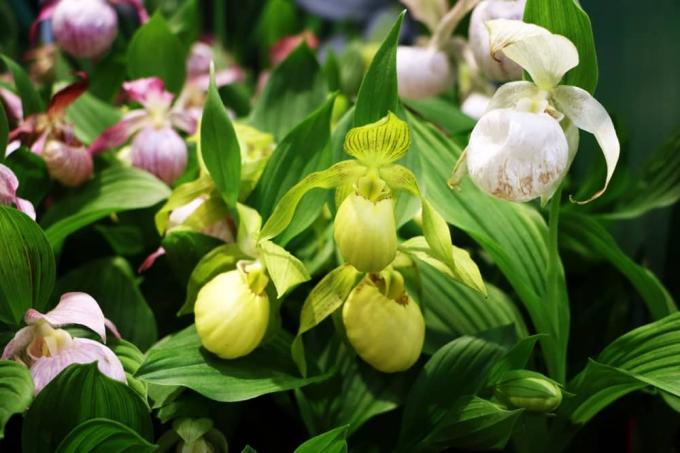
Table of contents
- natural reserve
- species
- Location
- plant orchids
- Care
- hibernate
Around 25,000 species of orchids exist worldwide. The plant can be found almost everywhere on earth. In any case, many strains do not need tropical conditions to thrive. An intact ecosystem is much more important. Wherever that is okay, they also grow here, especially in forests, wet meadows and on high plateaus. They can even be cultivated in the garden - provided the strictly protected plants have not been unlawfully dug up in the forest.
natural reserve
Orchids are fascinating plants. They score with their variety of shapes and of course with their beauty. It goes without saying that as a plant lover you will be delighted to discover a wild type of orchid in the forest.
But be careful: there is nothing more than looking forward to it!
All of our native orchids are protected species. They may not be picked, dug up or damaged. Anyone who does so and is caught must expect a hefty fine.

Our native orchid species have meanwhile become so rare that this protection is absolutely necessary. Consequently, one must resist all temptations to simply dig up a wild orchid and bring it into the garden. If you want to enrich your own greenery with native orchids, you should use plants from artificial worship that are available in specialist shops. A clear proof of origin is then absolutely necessary for real nature lovers.
species
Around 25,000 orchid species have now been discovered worldwide. At least 60 wild species still grow in the wild in our latitudes – albeit with a decreasing trend. The best-known native orchid species is certainly the so-called lady's slipper, which can easily compete with its tropical relatives in terms of shape and beauty. Unfortunately, it has become so rare that it can hardly be found in the wild. Other native orchid species that can also thrive in the garden are:
- Fly Orchid
- Helmet orchid
- Marsh Orchid
- fragrant orchid
- straw-colored orchid
- broad-leaved orchid
- nestroot
What all these orchid species have in common is that in order to thrive, they need a symbiosis with a fungus that supplies them with vital nutrients. Without this fungus, orchid seeds would not even germinate. As a rule, however, the fungus is supplied with orchids bought in specialist shops in the associated potting soil.
Location
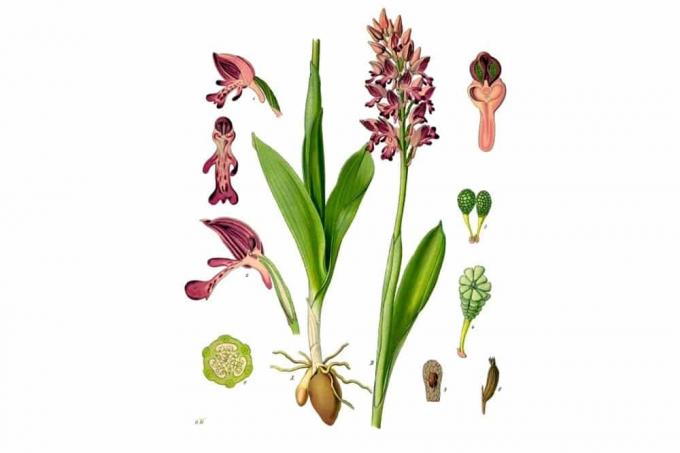
If you want to cultivate native orchids in your own garden, you don't have to worry too much about yourself. Contrary to what you might think, orchids are relatively undemanding and do not require much care. However, the right location plays a particularly important role for their well-being. If the location is not right, the plant will not grow either and will sooner or later die. If you want to avoid this, the location must absolutely meet the following requirements:
- shady
- protected
- loose, well-drained soil
- moist but not too wet

Orchids generally like it damp, but cannot tolerate waterlogging. A soil with a high clay content can therefore be poison for the plants, since the water can only drain off poorly here. Loose soil mixed with some sand is therefore a must.
plant orchids
If at all possible, you should plant native orchids in the garden and not try to grow them yourself from seeds. The latter is a highly complex process that requires a great deal of knowledge and experience if it is to succeed. Fully developed seedlings are therefore also available in specialist shops, which simply have to be planted. Incidentally, reputable retailers will only sell native orchid species that are also suitable for cultivation in the garden. When planting, keep the following in mind:
- the best time to plant is in the fall when the orchid is dormant
- choose the right location
- loosen the soil well and deeply before planting
- plant the plant with the supplied soil
- water them well immediately after planting
Incidentally, orchids also get along very well with other plants. They are therefore also perfect for so-called natural gardens, in which they are part of the overall staging.
Care
Despite all prophecies of doom, native orchids in the garden are extremely easy to care for. Basically, they just need to be watered regularly. It is important in this context that the soil around the plant is best checked daily. It must be damp, but under no circumstances should it be really wet. It is essential to avoid waterlogging, as the orchid does not tolerate it and would suffer from it. Lime-free rainwater is ideal for watering. Orchids in the garden should only be fertilized moderately - and only during the growth phase in summer. The so-called weak eaters, which include all orchid species, require relatively few nutrients and do not tolerate too high a salt concentration. It is best to use liquid fertilizer for this, which is administered via the irrigation water according to the manufacturer's dosage instructions.
Tip:
Orchids prefer to fertilize a little less than too much.
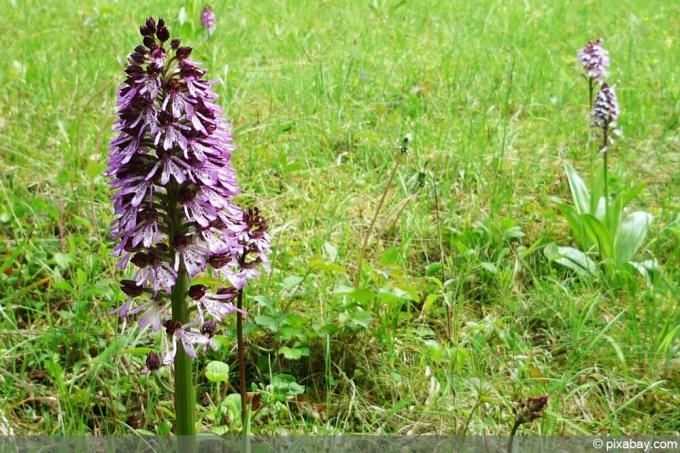
Orchids do not need to be pruned and should not be pruned. It is sufficient to carefully remove any withered flowers. Usually, however, not even that is necessary.
hibernate
This will also surprise many garden lovers: the native orchid species that are suitable for cultivation in the garden are usually hardy. Even temperatures of minus 20 degrees Celsius don't usually bother them if they are well protected under a blanket of snow. To really be on the safe side, we recommend covering the plants with fir branches in late autumn. A special hibernation or even digging up the plant is definitely not necessary. And of course you can also stop watering completely during this time. When the temperatures are warmer again from April and the growth phase becomes apparent, regular watering begins again.
 garden editorial
garden editorial I write about everything that interests me in my garden.
Learn more about orchid species
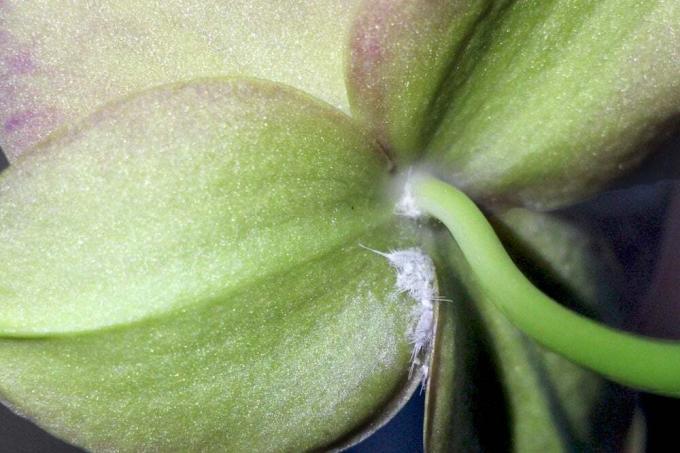
Fight pests on orchids - ways against lice & vermin
Orchids are popular indoor plants and are often given as gifts, but unfortunately they are also occasionally attacked by pests - and these can cause considerable damage to the plants. Interested parties can find out here how pests on orchids can be combated.
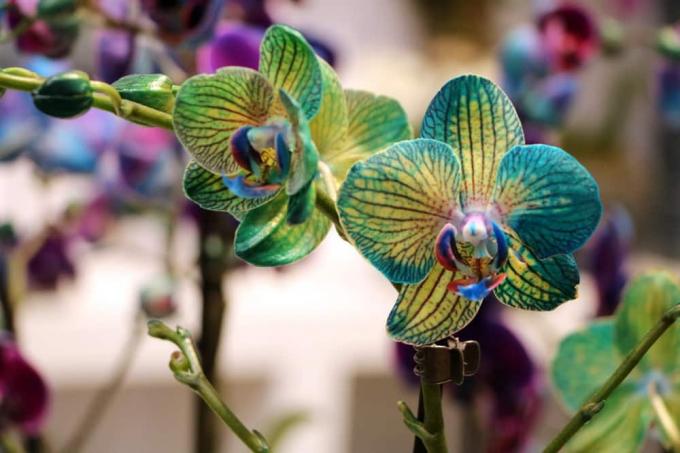
Blue orchids: how to dye orchids blue yourself
If orchids with blue flowers are offered in the garden trade, they are usually not natural flower colors. With a bit of skill, you can also dye white-flowering orchids yourself if you repeat the process for each new bloom.

Cypripedium Orchids - Caring for Hardy Lady's Slippers
The exotic plant is a real eye-catcher and, with its unusual flowers, provides the extravagant touch in the home garden. However, if you want to enjoy the beautiful flowers from May, you need a little finesse when it comes to care.

Orchid has withered leaves - this is how you get them fit again
A healthy orchid usually has few but fleshy and lush green leaves. When they start to wither, the shock is great at first. Can the orchid still be saved? Read what your orchid is missing and what you can do about it.

Orchid location above the heating - is heating air harmful?
Many orchid species are native to subtropical and tropical climates. They need light, warmth - and high humidity. Conditions that do not exist in winter and in a place above a heater. With these measures, you can still get your orchids healthy through the cold season.

orchid fertilizer vs. Home remedies - which fertilizer is the best?
Orchids are not known as divas among houseplants for nothing, but they are still very popular. They are very demanding when it comes to maintenance. The fertilizer is of particular importance, because the wrong fertilizer can cause a lot of damage.

